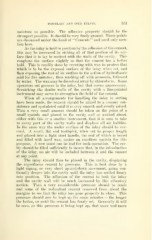Page 693 - My FlipBook
P. 693
PORCELAIN AND GOLD INLAYS. 351
moisture as possible. The adhesive property should be the
strongest possible. It should be very finely ground. These points
are discussed under the head of "Cements" and need only men-
tion here.
As the inlay is held in position by the adhesion of the cement,
this may be increased by etching all of that portion of its sur-
face that is to lay in contact with the walls of the cavity. This
roughens the surface slightly so that the cement has a better
hold. This is readily done by covering with wax to protect that
which is to be the exposed surface of the inlay when set, and
then exposing the rest of its surface to the action of hydrofluoric
acid for five minutes; then washing off with ammonia, followed
by water. The wax may be dissolved away by chloroform. Some
operators cut grooves in the inlay, but that seems unnecessary.
Scratching the dentin walls of the cavity with a fine-pointed
instrument may serve to strengthen the hold of the cement.
When all arrangements for handling the inlay in setting
have been made, the cement should be mixed to a creamy con-
sistence and spatulated until it is very smooth and evenly mixed.
Then a very small amount should be taken on the point of a
small spatula and placed in the cavity and so worked about,
either with this or a smaller instrument, that it is seen to take
to every part of the cavity walls and displace all air bubbles.
In the same way the under surface of the inlay should be cov-
ered. A small, flat end toothpick, when cut to proper length
and placed into a light steel handle, the end of which is bored
and filled with hard wax, makes an excellent spatula for this
purpose. A new point can be had for each ojieration. The cav-
ity should be filled sufficiently to insure that, in the introduction
of the inlay, no air will be included between it and the cement
at any point.
The inlay should then be placed in the cavity, displacing
the superfluous cement by pressure. This is best done by a
light zigzag, or very short up-and-down movement, going con-
tinually deeper into the cavity until the inlay has settled firmly
into position. The adhesion of the cement to both the inlay
and the cavity wall will be much increased by this vibratory
motion. Then a very considerable pressure should be made
and some of the redundant cement removed from about the
margins to see that the inlay has gone properly to place. This
pressure should now be kept up for some minutes — the longer
the better, or until the cement has firmly set. Generally it will
be seen, as this pressure is being kept up, that more and more


